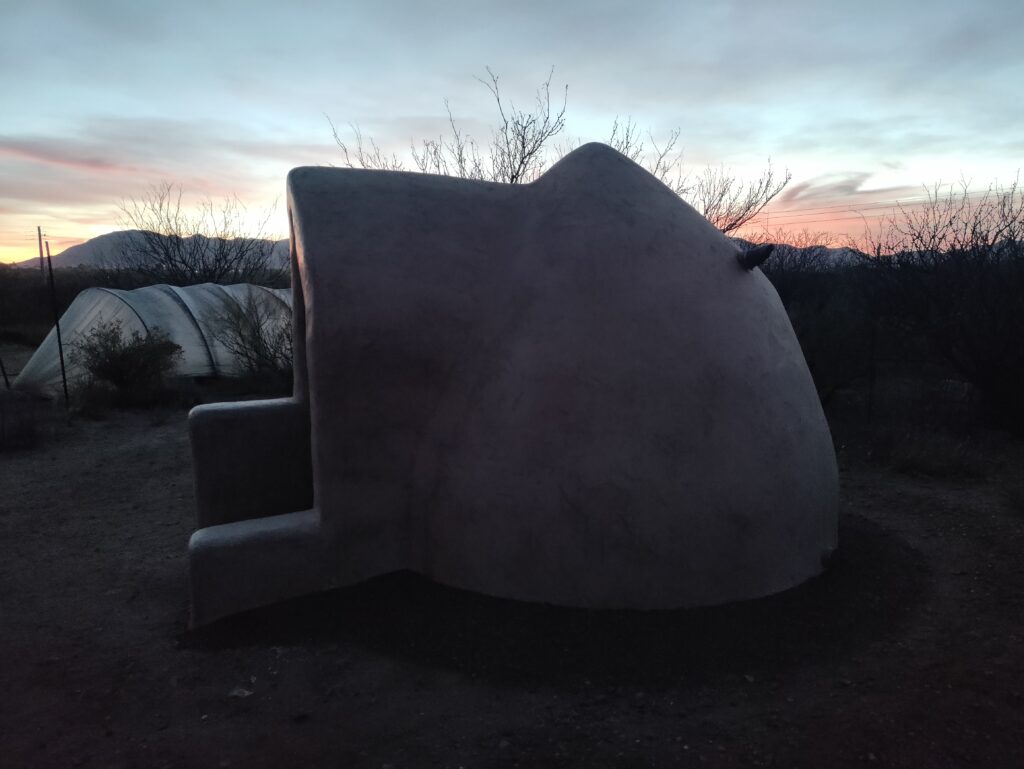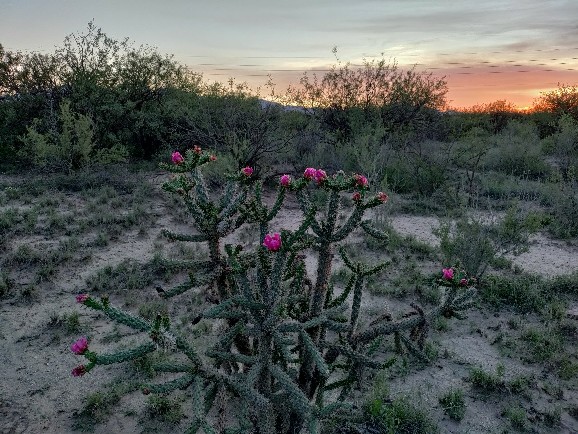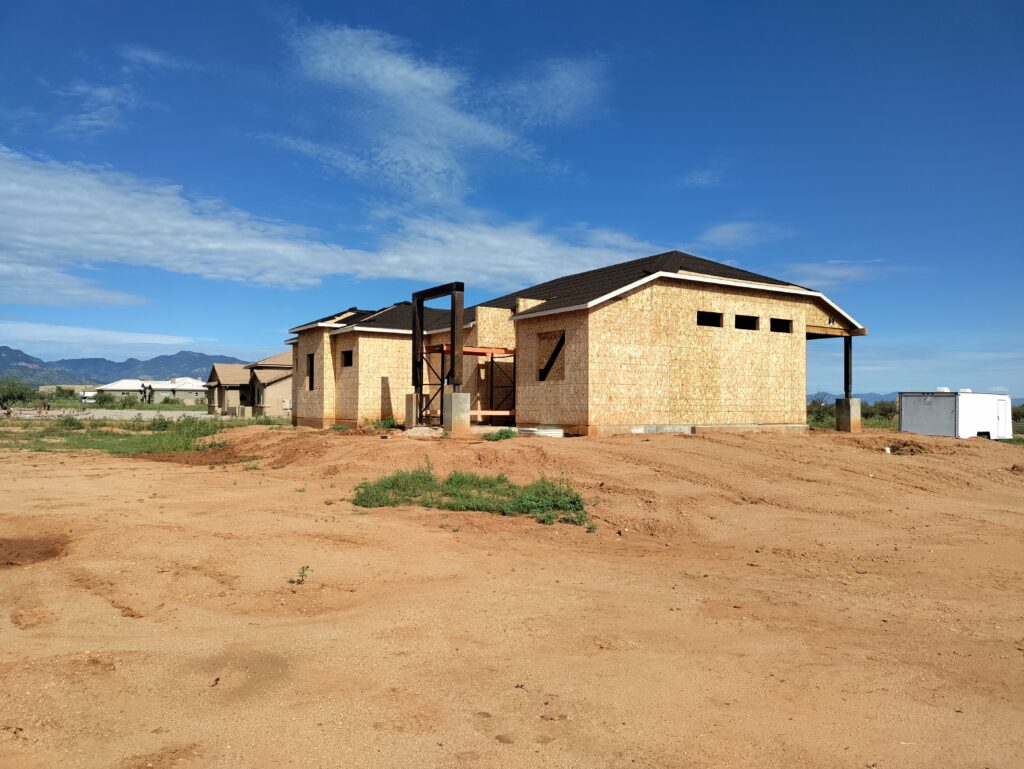It’s one thing to construct a building and it’s another thing to finish it! We’ve shared multiple posts with different aspects of building domes, so it’s high time to share how we finished them over the last year. Finish work often involves detail work such as trim, windows, and doors, and may include some details that you might not have completely planned out unless you had a professional designer who helped you think through every last detail. We had a number of unconventional details to work out so these buildings won’t grow mold the way conventional buildings do.

Our finish work involved exterior and interior plaster, floors, screen and storm doors, ventilation, as well as passive solar heating and cooling. We didn’t bother with windows since these domes are only about 50 ft² and just intended for sleeping in, not living in. We did try a skylight on top of our first dome. The plaster got wet that winter and strong winds blew it right off the top (comical in hindsight!). My daughter thought of covering the gaping hole with a bin lid – which was just the right size – and holding it in place with concrete blocks until it could be repaired. It worked beautifully! Well, maybe it wasn’t beautiful, but it worked.
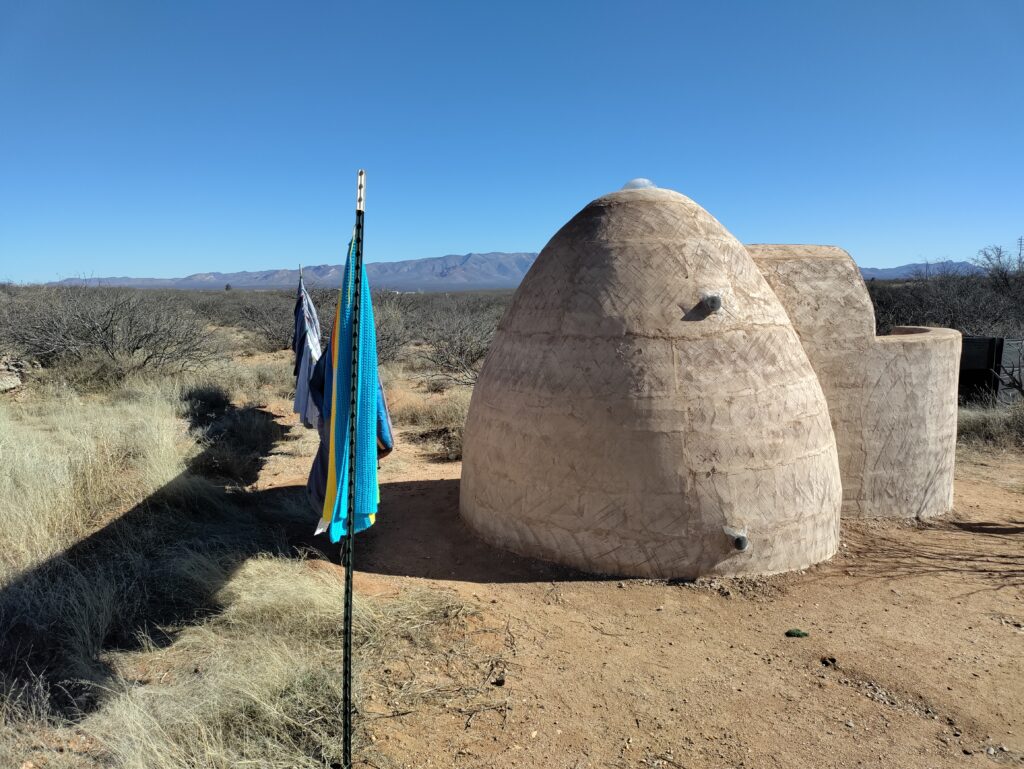
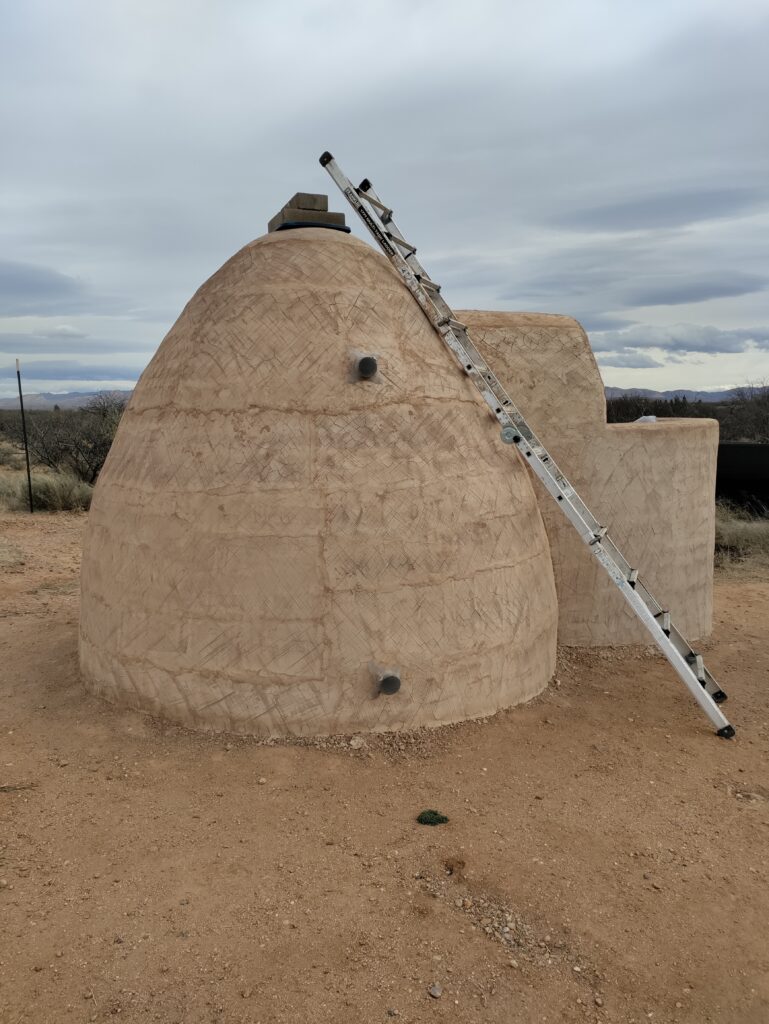
That brings us to the challenge of working with natural plasters. They get somewhat soft when they get wet. Our pounding monsoon rains – commonly driven by 50 mph wind gusts – would erode the exterior plaster before very long. You’d have to redo it year after year. It needs to be protected somehow.
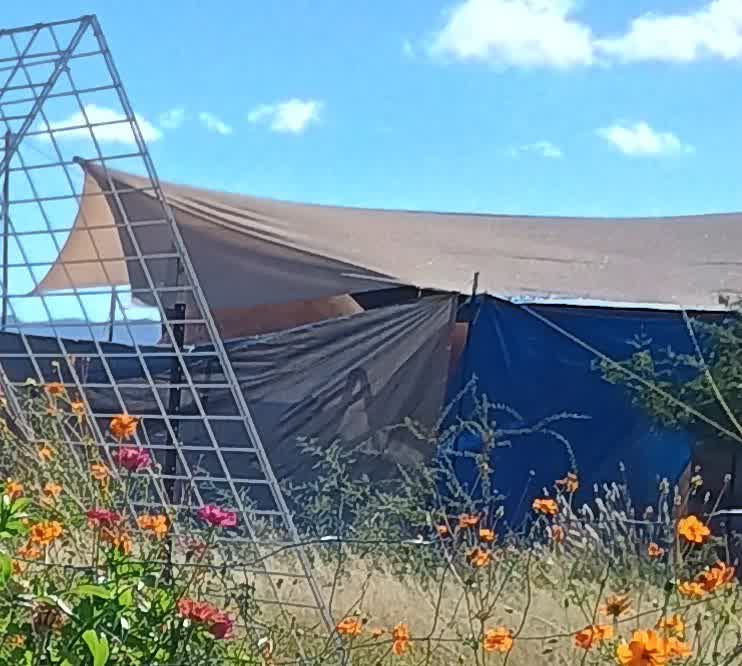
However, lime plaster is absolutely superior to other natural plasters and cement for healthy building. Unlike clay plaster, lime has a high enough pH to kill mold spores and neutralize mycotoxins. Which means your new building gets a clean start! And unlike stick-built structures with plastic vapor barriers or cement stucco – which trap moisture and result in mold growth – lime-plastered, lime-stabilized earthen buildings control moisture and humidity in healthy ways. They breath! Moisture and humidity is expelled and in the process, the building is strengthened. It’s actually beneficial for lime structures to get wet as long as they are treated gently. Every time they get wet and dry again they get another step closer to turning back into limestone!
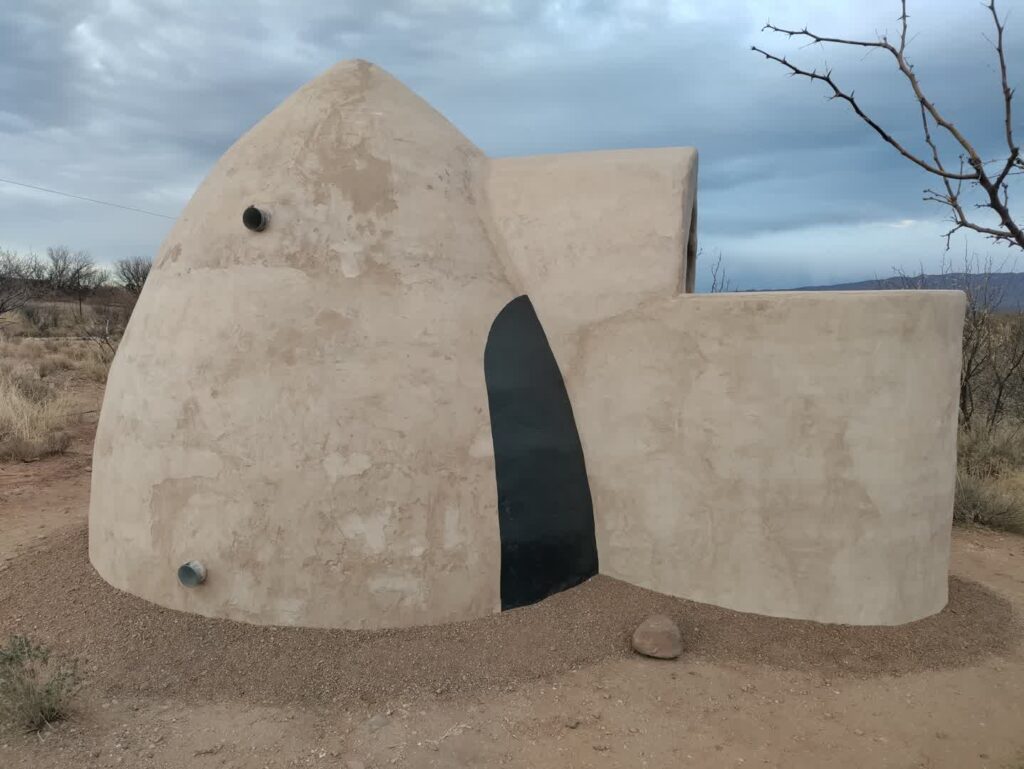
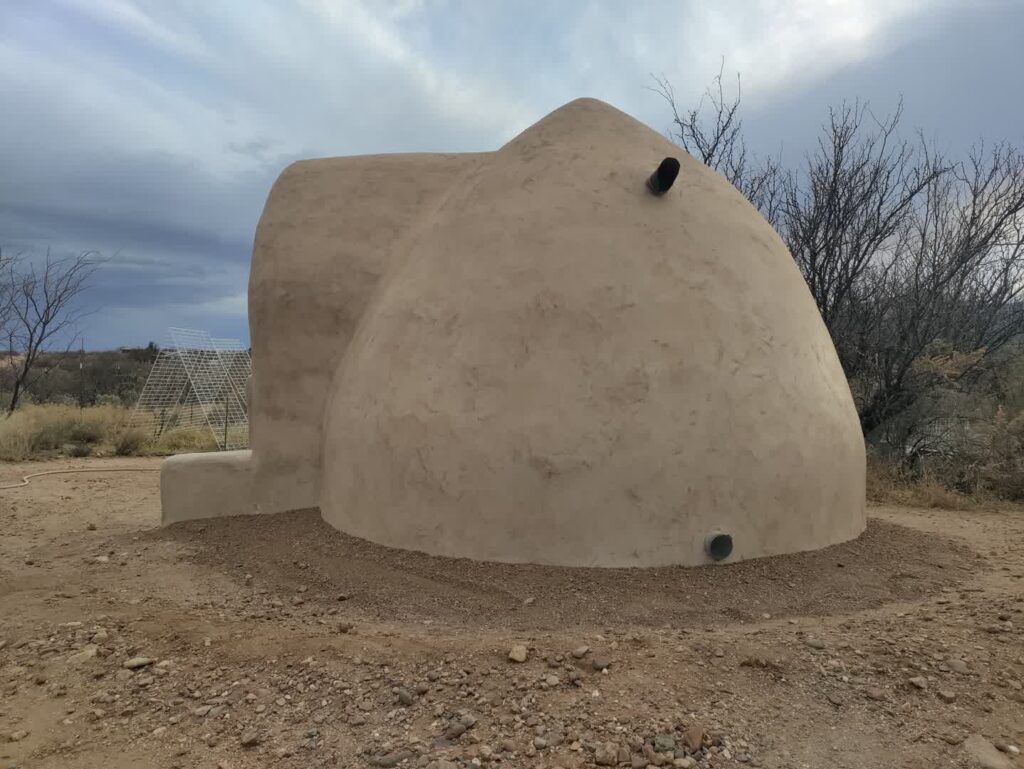
In the meantime, how do you protect it while keeping it breathable? CalEarth, where we got our Superadobe training, recommends asphalt or cement, neither of which are breathable. I did a lot of research and put a lot of thought into it. The best thing I came up with for a rain screen was a shade sail. This would also keep the domes cooler in the summer, while allowing winter sun in to warm them – stacking functions. I thought I had the perfect solution and built a temporary, low-cost shade sail over one of the domes to test it. It held up surprisingly well during monsoons the year before last, but it was more of a nonsoon year with only a handful of storms. The sail was just a bit too small and the dripline did cause some erosion on part of the dome. Other than that, it seemed like a shade sail would make an excellent rain screen. I had measured temperature differences between the shaded and unshaded domes and it did make a couple degree difference inside.
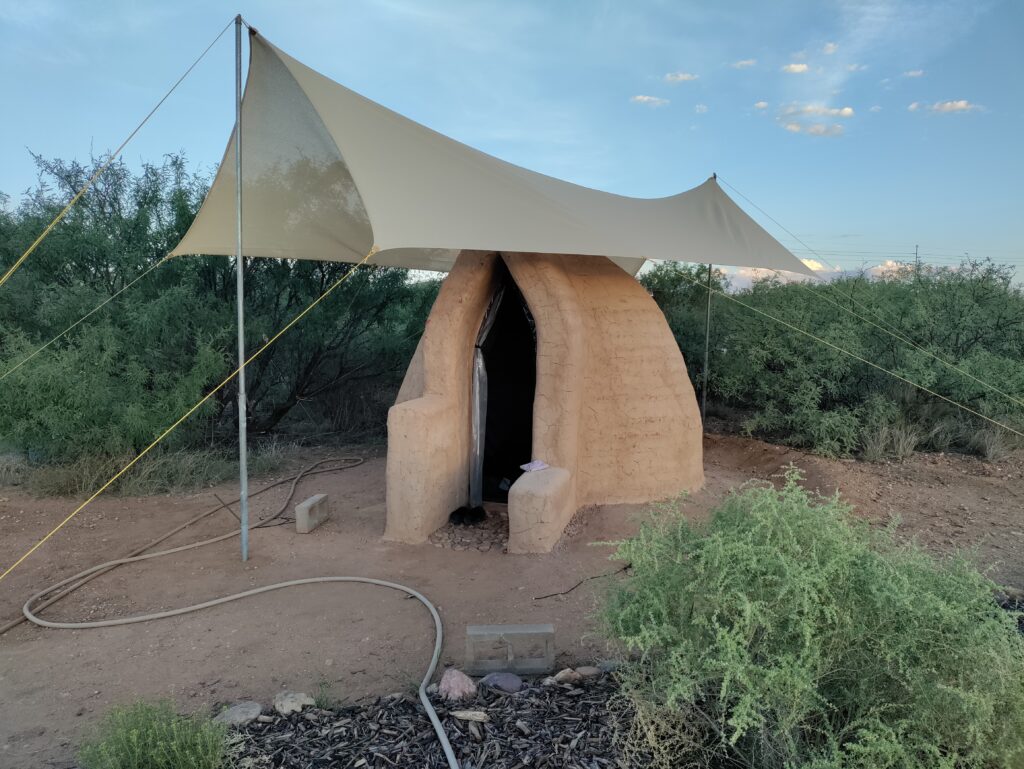
Last year I looked into permanent shade sails that can handle the Arizona weather and are large and high enough to cover a dome. They would cost more than a dome to build. Each dome only cost about $1,000. Each shade sail would have cost a few thousand dollars. I don’t have the money for that so I called Originate Natural Building Materials in Tucson to ask what they recommend for protecting natural plaster from monsoon rains. They recommend Acri-Soy, a non-toxic, clear, water repelling sealant. It provides a breathable, fast drying, non-film forming integral seal within the substrate so there is no surface film to ever flake or peel. Its fast, easy application is supposed to prolong the life and natural appearance of the lime plaster by resisting moisture, mold, mildew, efflorescence, dusting, and staining. Total price for both domes was less than $100 so we tried it. Time will tell how it performs.

We acquired breathable mineral paint and before applying the Acri-Soy, we painted black “solar heaters” on the south sides of the domes. In the summer the sun barely glances on the south face of the domes, but they get a direct hit in the winter. The surfaces that are painted black get so hot that you can feel it when you walk by. The thermal mass of the domes soak up the heat during the day and release it inside overnight (it does the opposite with cold at night, releasing it during the day). It’s the only heat source we use, but inside my wife made hanging bed curtains, which are a low-tech way to stay warm and were commonly used in centuries past. Your body produces enough heat to make the small space quite comfy.
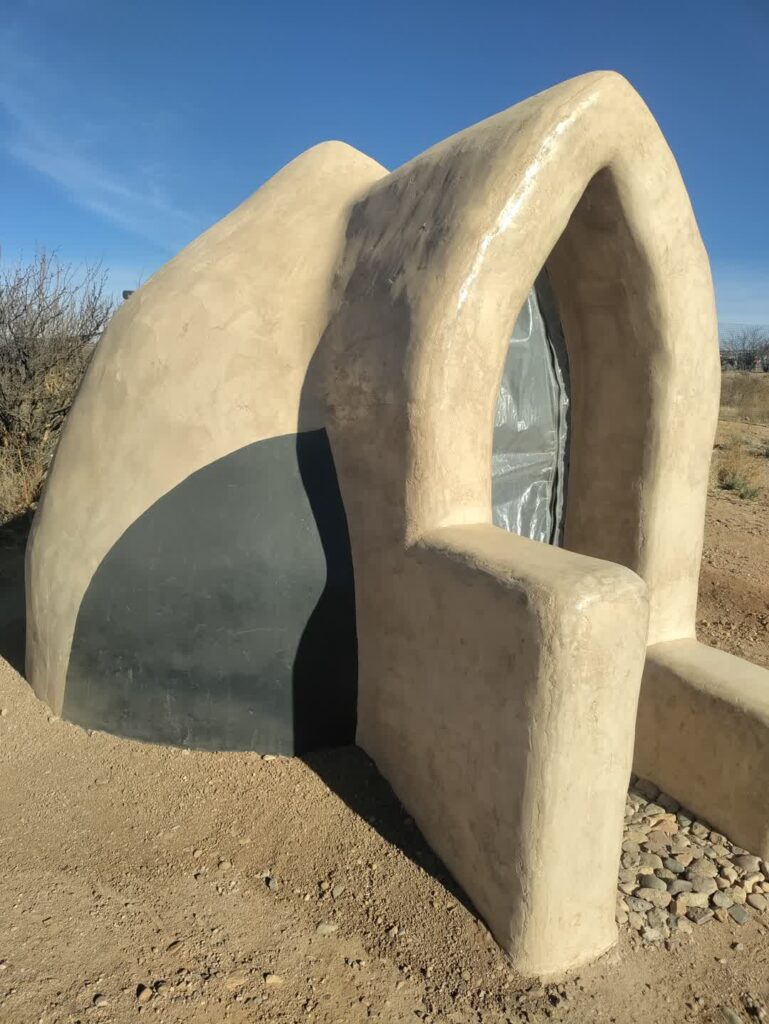

The dome doors also face south or southeast to maximize solar gain in the winter and minimize it in the summer. Our original doors were designed with zippers in the style of tent doors and include both a screen door and a storm door (made of greenhouse plastic). They are secured inside the doorway arch with greenhouse wiggle wire track. That part of installation isn’t difficult, but sewing zippers on is very time consuming. My wife did a great job with the sewing but she is intent on figuring out a different door system because this one will have to be redone every few years when the plastic screens and storm doors fail.
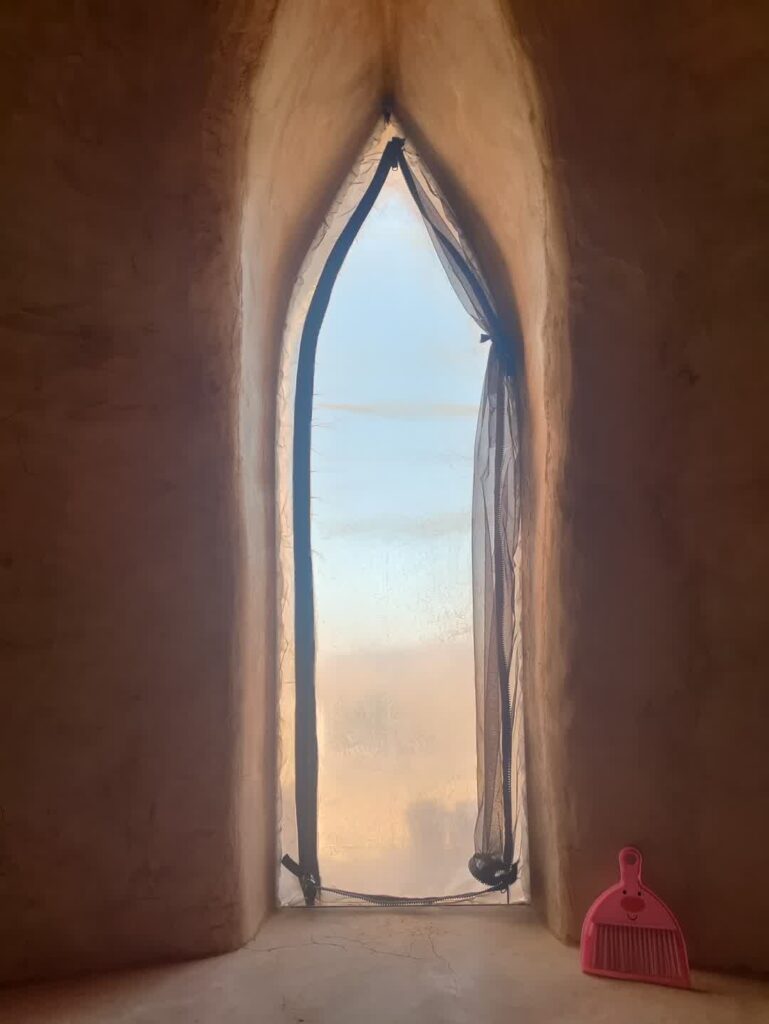
We also used lime plaster for the interior walls and made earthen floors finished with lime plaster. We built in four 4″ ventilation tubes for each dome, two low and two high for better air circulation. They have metal screens on the outside to keep bugs out and for the inside my wife sewed breathable, cloth covers secured to the tubes with elastic that are perfect for reducing airflow when it’s cold.
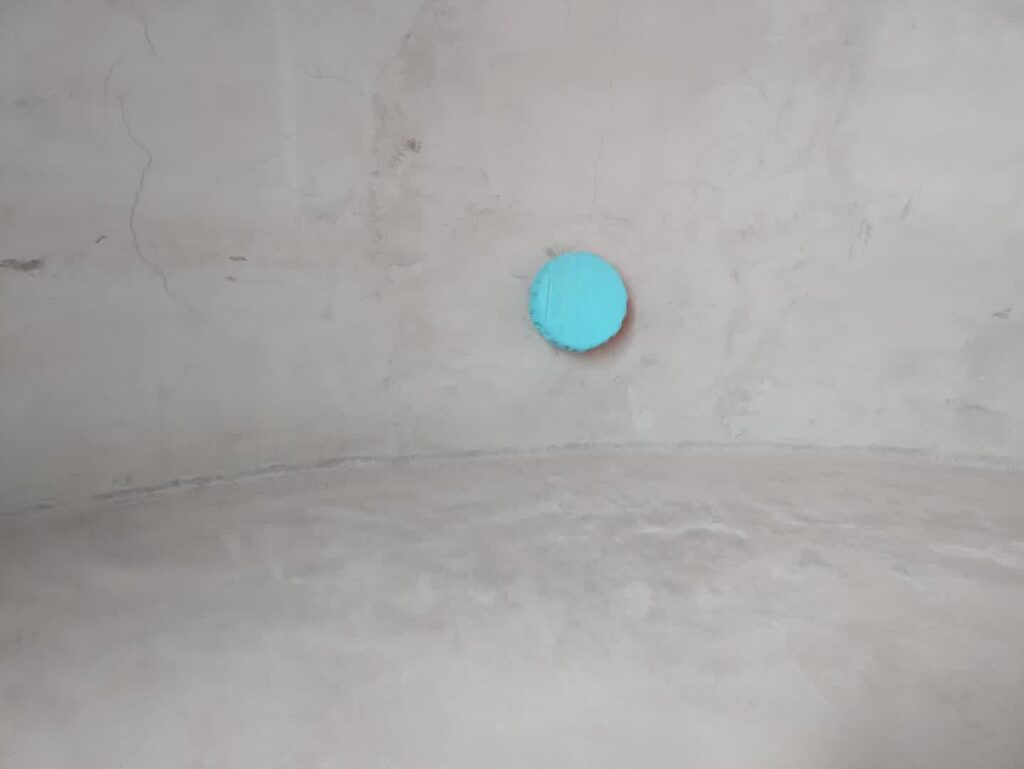
I may have missed a detail or two, but I think I covered most of the finish work. It’s probably difficult for you to experience it with just words and pictures. If you’d like to learn or see more, come visit us! Feel free to ask questions or make suggestions (especially for an innovative door!) by commenting below.
